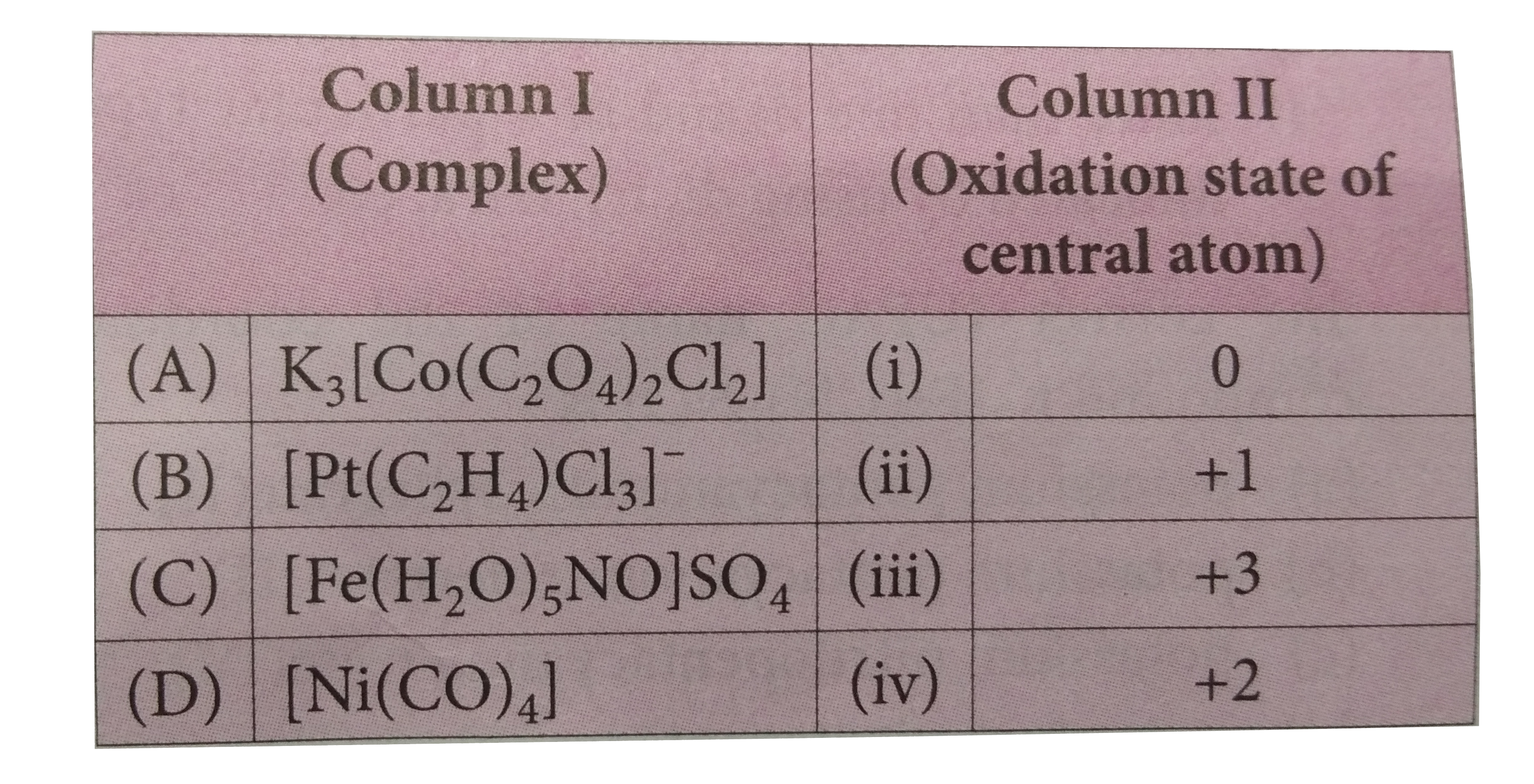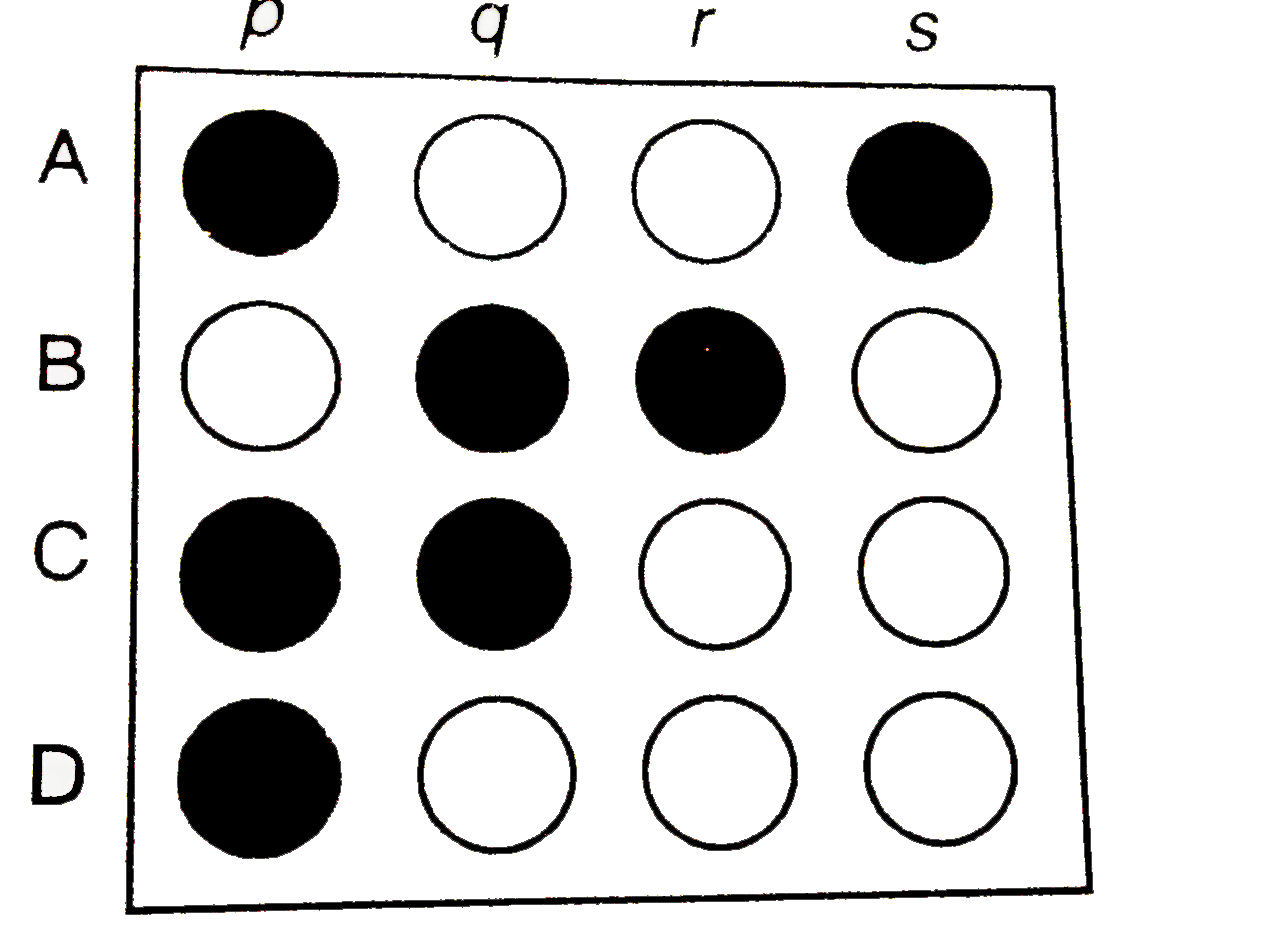Match the complex with its oxidation state of central metal
Column I Column II(A) Chromyl chloride test(p) S2−(B) Ring test(q) NO−3(C) Smell of vinegar(r) CH3COO−(D) Smell of rotten eggs(s) Cl−
The correct Answer is:A(s), B(q), C(r), D(p)
Topper's Solved these Questions
- PRINCIPLES OF QUALITATIVE ANALYSISBOOK - AAKASH INSTITUTECHAPTER - PRINCIPLES OF QUALITATIVE ANALYSISEXERCISE - Assignment (SECTION F)
6 Videos
- PRINCIPLES OF QUALITATIVE ANALYSISBOOK - AAKASH INSTITUTECHAPTER - PRINCIPLES OF QUALITATIVE ANALYSISEXERCISE - Assignment (SECTION G)
5 Videos
- PRINCIPLES OF QUALITATIVE ANALYSISBOOK - AAKASH INSTITUTECHAPTER - PRINCIPLES OF QUALITATIVE ANALYSISEXERCISE - Assignment (SECTION D)
9 Videos
- POLYMERSBOOK - AAKASH INSTITUTECHAPTER - POLYMERSEXERCISE - ASSIGNMENT (SECTION-D)
13 Videos
- REDOX REACTIONSBOOK - AAKASH INSTITUTECHAPTER - REDOX REACTIONSEXERCISE - ASSIGNMENT SECTION - D
10 Videos
Similar Questions
Match the following :
Column I Column II(A) Chromyl chloride test(p) S2−(B) Ring test(q) NO−3(C) Smell of vinegar(r) CH3COO−(D) Smell of rotten eggs(s) Cl−
View SolutionMatch the complexes given in column I with the oxidation states of central metal atoms given in column II and mark the appropriate choice .

View SolutionMatch the complexes given in column I with the oxidation states of central metal atoms given in column II and mark the appropriate choice .

View SolutionColumn IColumn II(A)ΘCH3(P) Nucleophile(B) BF3(Q) Base(C) .CH3(R) Electrophile(S) Acid
View SolutionColumn IColumn II(A) Emulsionp Colloidal solution(B) solq Dye test(C) Tyndall effect r Milk(D) Colligative properties s Haemoglobin

View SolutionMatch Column I with Column II for the oxidation states of the central atoms .
Column IColumn II(i)Cr2O2−7(a)+3(ii)MnO−4(b)+4(iii)VO−3(c)+5(iv)FeF3−6(e)+7
View SolutionMatch Column I with Column II for the oxidation states of the central atoms .
Column IColumn II(i)Cr2O2−7(a)+3(ii)MnO−4(b)+4(iii)VO−3(c)+5(iv)FeF3−6(e)+7
View SolutionMatch the following :
Column IColumn II(a) Sandmeyer reaction(p) Chlorobenzene(b) Gattermann reaction(q) Bromobenzene(c) Rasching method(r) Benzyl chloride(d) Chlorination of toluene(s) Iodobenzene
View SolutionMatch the column
Column I (Acid)Column II (pKaValue)(A) HCOOH(p) 1.73(B) CH3COOH(q) 3.74(C) PhCOOH(r) 4.17(D) (COOH)2(s) 4.75
View SolutionMatch the term given in column I with its description in Column II
Column I Column II(a)Path function (p)Heat(b)State function (q)Internal energy (c)Intensive property(r)Entropy(d)Extensive property (s)Specific heat
View Solution
